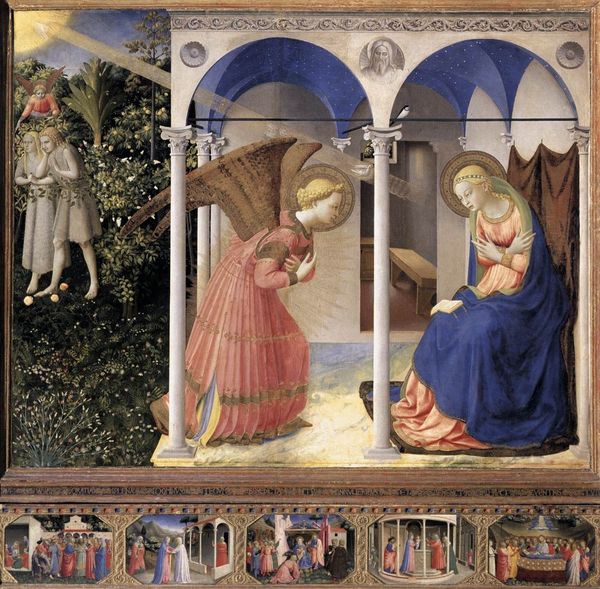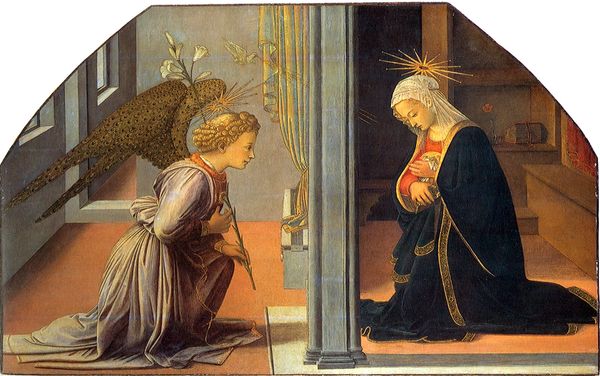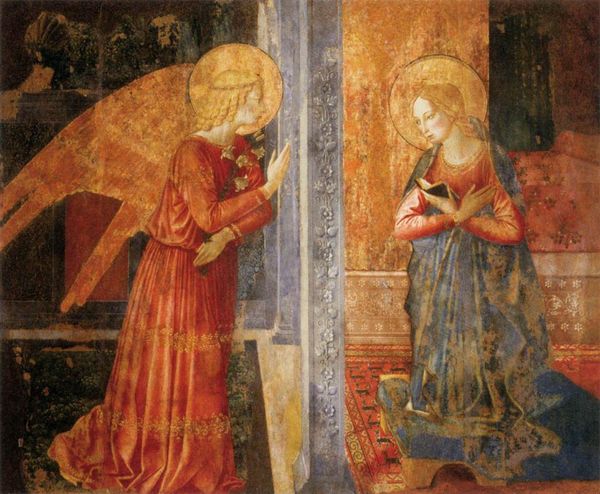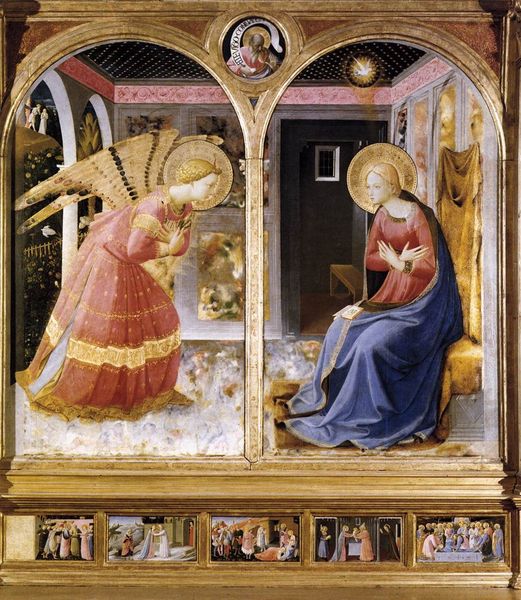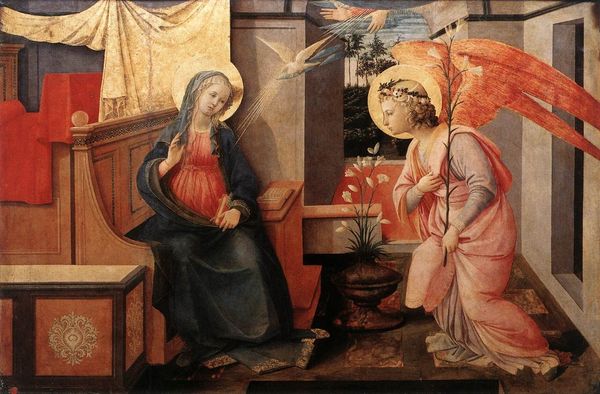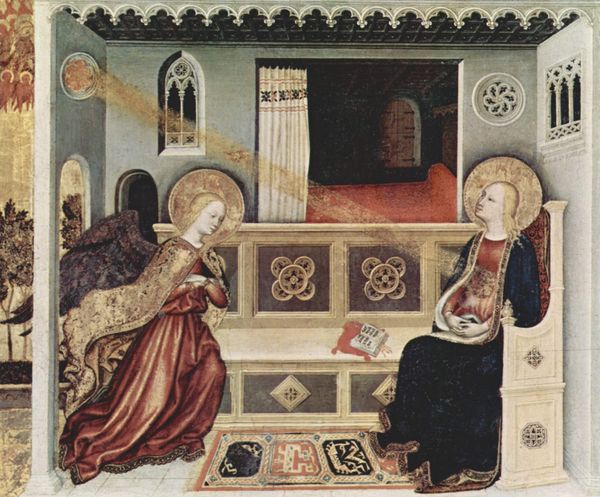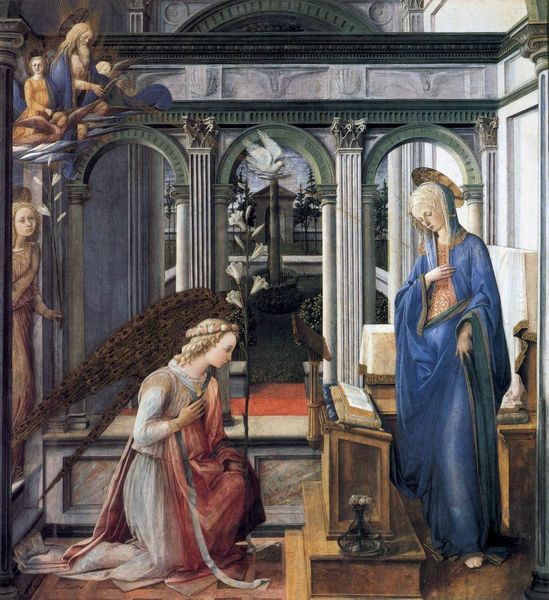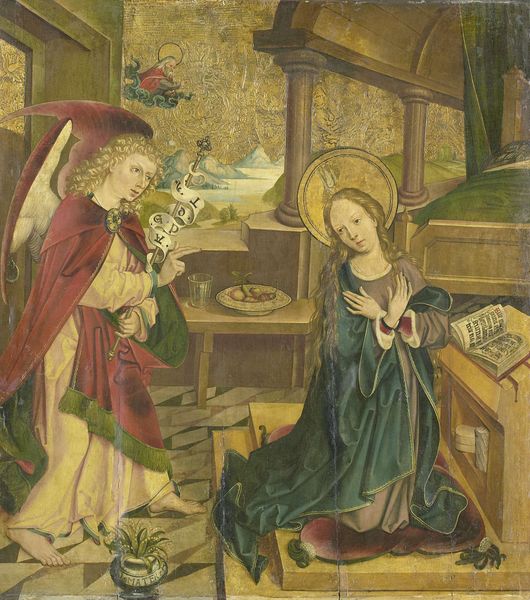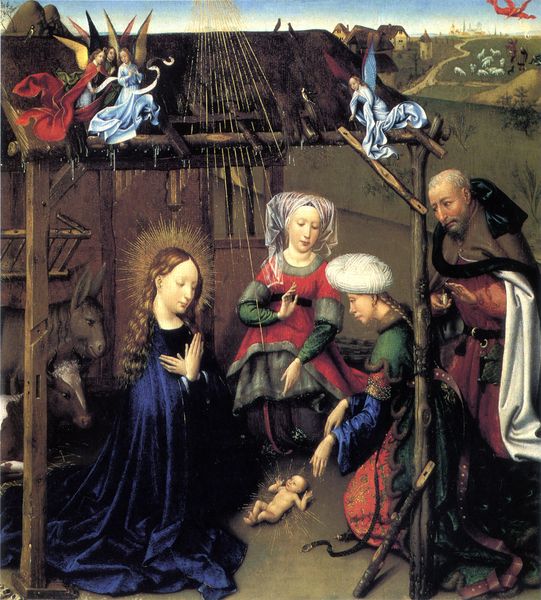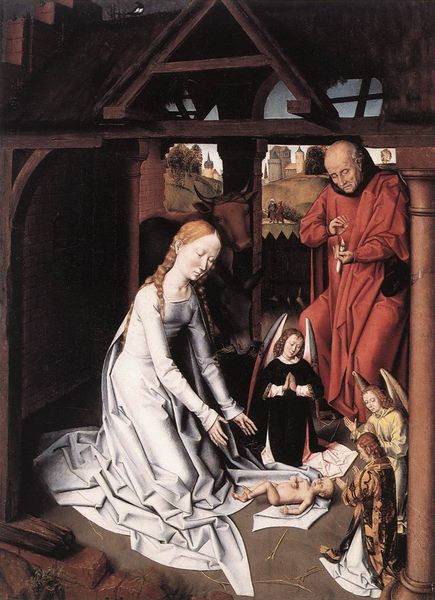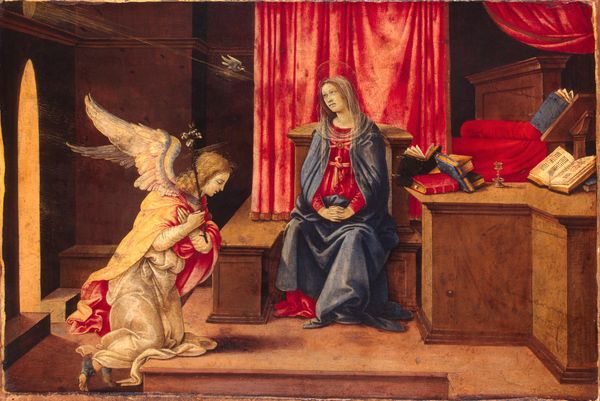
tempera, painting, oil-paint, fresco
#
tempera
#
painting
#
oil-paint
#
fresco
#
oil painting
#
christianity
#
history-painting
#
italian-renaissance
#
virgin-mary
#
angel
#
christ
Dimensions: 68 x 152 cm
Copyright: Public domain
Editor: So, here we have "The Annunciation" by Filippo Lippi, dating back to around 1450. It's currently housed at the National Gallery in London. The composition strikes me immediately – the angel on the left and Mary on the right, separated by an architectural divide. How do you interpret this work? Curator: What strikes me is less the separation and more the stage on which it's set. It speaks to how religious narratives were increasingly framed within a specific, contemporary social context. Lippi presents a very human, relatable interaction – the divine intruding upon domestic space, but also shaped *by* it. What do you notice about that interior space itself? Editor: Well, the space does feel somewhat flattened, compressed even, but detailed. It’s clearly an attempt to ground this divine encounter in reality. The dove descending, for instance, amidst the tiled floor and heavy drapery. Is that contrast important? Curator: Absolutely. Consider who the intended audience was for this work and what kind of message was being conveyed. Religious art at this time wasn't just about conveying religious doctrine; it was about negotiating power. The patrons commissioning these pieces were signaling their wealth, their piety, *and* their place within the social hierarchy. How does that tiled floor, the careful detail, play into that? Editor: So it's less about purely religious devotion and more about how that devotion intersects with societal positioning? It adds a whole other layer. I hadn't considered that so overtly. Curator: Precisely. These pieces are cultural artifacts, reflecting not only faith but the political landscape in which they were created. This collision is particularly striking, don’t you think? Editor: Definitely! It makes you reconsider the purpose art served within the Church and the state at the time. Curator: Yes, and reminds us that religious painting wasn’t always, or even primarily, a vehicle for solely spiritual experience. There are dialogues happening on other levels of public life, if we know where to look.
Comments
No comments
Be the first to comment and join the conversation on the ultimate creative platform.
